by Macky & Veronica | Dec 14, 2019 | Preschool
This week we continued working with our “Festividades del Mundo” unit. This week we worked with Kwanzaa festivities. The kids learned that Kwanza is a seven-day celebration from December 26th through January 1st. Kwanza is a celebration to honor African Culture and to also inspire African Americans. The Kwanza celebrations often include African dances, drums, storytelling and poetry. The kids learned that also the colors of Kwanza are black, red and green. The kids also worked on the Christmas celebration and they made amazing decorations such as: snowmen, candy canes, Christmas tree, and boots.
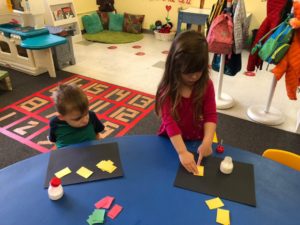
December vocabulary
Vela-candle,
Bota-boot,
Bastón de caramel-candy cane,
Estrella-star,
Campana-bell,
Adorno (esfera, ornamento)-ornament,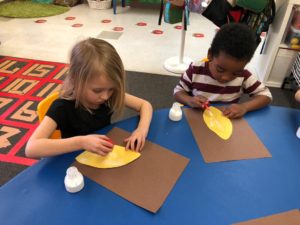
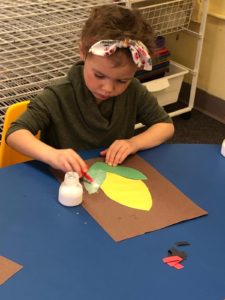
Reno-reindeer,
Árbol de Navidad-Christmas tree,
Papá Noel (Santa Claus) – Santa Claus.
Words of the week:
Kinara, elote, vela.
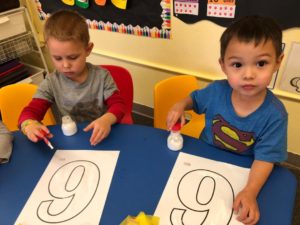 Libro
Libro
My First Kwanzaa.
How The Grinch Stole Christmas.
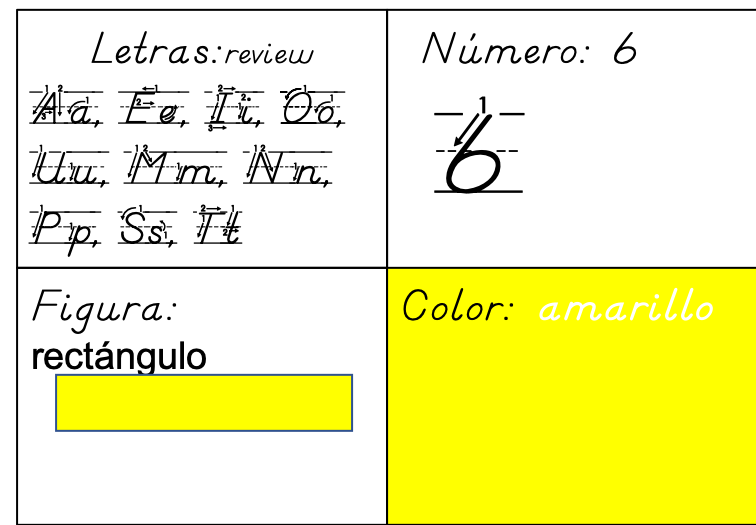
Thursday and Friday next week will be either holiday pajamas or holiday clothing. Fun!
by Marci & Ivary | Dec 14, 2019 | First Grade News
La Lectura
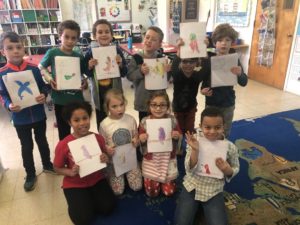 This week we began our new unit Jobs Around my Neighborhood. We started reading ¿Adivina quién?. Our objectives were:
This week we began our new unit Jobs Around my Neighborhood. We started reading ¿Adivina quién?. Our objectives were:
- practice reading and using the sight words este (this) and cuando (when)
- learn about picture essays
- review the letters ll, y, and k
- introduce the new unit by discussing different jobs (fireman, policeman, mailman, nurse)
Las matemáticas
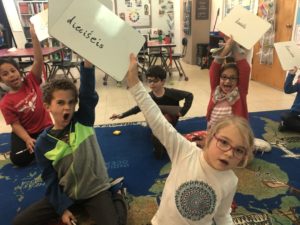 This week we worked with numbers to 20. Our objectives were:
This week we worked with numbers to 20. Our objectives were:
- compare numbers to 20 using mas que (more than) and menos que (less than)
- build and identify numbers using base 10 blocks
- practice writing numbers to 20 in word form
Science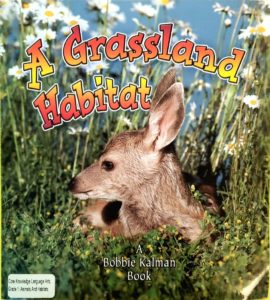
This week in our science domain: Animals and Habitats, we learned about the East African Savanna.
Our weekly objectives were to:
• describe what a habitat is
• understand that living things live in habitats to which they are particularly suited
• identify the characteristics of the grassland habitat
History & Geography
This week we in our Early Americas Civilization unit we read about the Maya. The class determined that they were not nomadic people and identified some of the foods that they ate.
Our weekly objectives were to:
• compare and contrast hunter-gatherer societies in Mayan society
• understand the importance of extended family to the Maya
• identify the area in which the Maya lived
• understand the Maya farmed
• understand that a shift occurred from hunting and gathering to farming among early peoples
English Sight Words of the Week
to, too, we, up, way, was
by Jackie & Marci | Dec 14, 2019 | Kindergarten News
La Lectura
 This week we read the book “El invierno” (The Winter) where it talks about how much fun winter can be and all activities that can be done. It is a book that motivated children a lot to talk about what they do in winter, from the clothes they wear, how they play with the snow, to the Christmas parties and gifts they are so excited to expect.
This week we read the book “El invierno” (The Winter) where it talks about how much fun winter can be and all activities that can be done. It is a book that motivated children a lot to talk about what they do in winter, from the clothes they wear, how they play with the snow, to the Christmas parties and gifts they are so excited to expect.
In order to reinforce the knowledge for the children of reading and writing, we continued with the dictation of letters and words. We did several blending (a, e, i, o ) activities that the children enjoy very much.
Also ,we practiced with the projector on the board so that the children took turns identifying the word that is read aloud.
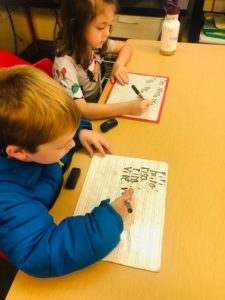 The words of the week were “Menos” (less) and “Día” (day. The children did a great job making sentences using these words like :” 5 es menos que ocho “(5 is less than 8) or “Este es un dia de escuela”(This is a school day).
The words of the week were “Menos” (less) and “Día” (day. The children did a great job making sentences using these words like :” 5 es menos que ocho “(5 is less than 8) or “Este es un dia de escuela”(This is a school day).
For our craft of the week we wanted to do something a little more challenging for the kiddos. The goal of this activity was to develop their fine motor skills even further. Our little ones made a christmas tree using paper strips of different sizes and colors, they had to pay more attention to instructions as they also pasted small strips of paper to assemble the tree, which required them to do precise manipulation of the materials in order to succeed in creating the craft.
Las matemáticas
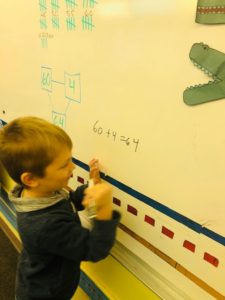
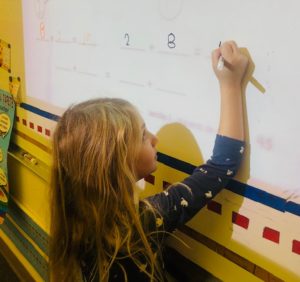 This week we worked on the strokes that form the numbers and the quantities that are associated with each number. The numbers of the week were 63 to 66. We also practiced units (ones) and tens as well as less than and more than concepts. We used number bonds to practice our sums, and we continued practicing with the abacus.
This week we worked on the strokes that form the numbers and the quantities that are associated with each number. The numbers of the week were 63 to 66. We also practiced units (ones) and tens as well as less than and more than concepts. We used number bonds to practice our sums, and we continued practicing with the abacus.
Science

Tasting sensations
This week in The Five Senses science domain we finished up our sense of taste and began learning about the sense of touch. We tasted food that represented the four types of taste: sweet, sour, salty, and bitter.
Our weekly objectives were to:
• identify the five senses: sight, hearing, smell, taste, and touch
• identify each of the body parts associated with the five senses
• demonstrate understanding of the sense of touch and taste
• identify the parts of the skin and their functions
• provide simple explanations about how we touch
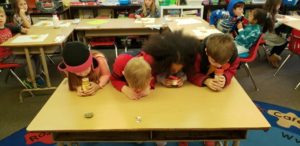 History & Geography
History & Geography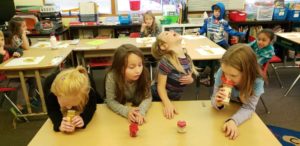
This week in our Columbus and the Pilgrims unit we learned about Columbus’s first expedition. The class had fun smelling spices and painting a picture of the Nina, Pinta, and Santa Maria ships with spice paint.
Our weekly objectives were to:
• recall the year of Columbus’s first voyage to America: 1492
• recall the names of Columbus’s three: ships: Niña, Pinta, and Santa Maria
• describe the accomplishments of Christopher Columbus
English Sight Words of the Week
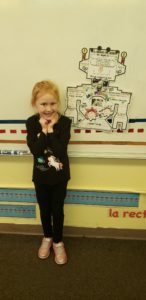
Student of the month
very, as, took
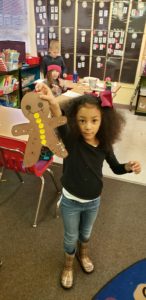 In addition to our regular curriculum we had fun with different versions of the Gingerbread Man story
In addition to our regular curriculum we had fun with different versions of the Gingerbread Man story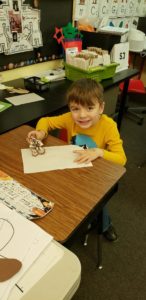
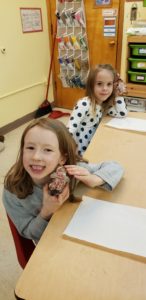
by Ivary & Paola | Dec 14, 2019 | 4th/5th Grade News
History & Geography
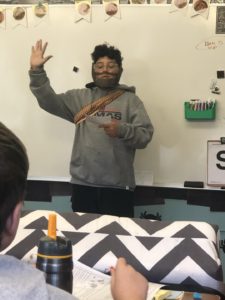 This week we continued to learn about The Renaissance. Our objectives were:
This week we continued to learn about The Renaissance. Our objectives were:
- understand linear perspective, found by Brunelleschi and Alberti, by creating a winter wonderland themed art piece
- discuss Botticelli’s The Birth of Venus and how it was inspired by Roman Mythology
- Understand Florentine society of the 1400s
- Understand the roles of members of the Medici family in Florence’s history
Mathematics
This week we continued to learn about Multiplying and Dividing Fractions. Our objectives were:
- Interpret division of a unit fraction by a non-zero whole number
- Solve real world problems involving multiplication of fractions and mixed numbers, by using visual fraction models or equations to represent the problem
- Solve real world problems involving division of unit fractions by non-zero whole numbers and division of whole numbers by unit fractions
Reminder that our T-Shirt Book Report is due January 10th!
Lectura
I was so very happy to share with our wonderful families all the work that our students have done this trimester during our conferences. Everybody should be very proud of their work!
It is hard to believe that our first trimester has come to an end. This week we spent our time working on our regular routines, as well as preparing for our end of the unit assessments. Students had a chance to present their creative spelling games. I am so impressed, not only by the hard work, creativity and effort they put into this project, but also by the way they incorporated the spelling concepts seen during this unit. After playing these games, students accomplished excellent results on their spelling assessment.
I will be travelling to Chile, this weekend, to visit my family and will be gone over winter break. Our class is so excited to welcome maestra Jackie as a guest teacher next week. We have some fun activities planned.
I would like to wish everyone a wonderful holiday season. I hope you all get to spend some precious family time, making exciting and fun memories together -because yes, family is indeed, the most important gift!
by Jill & Sarah | Dec 14, 2019 | 2nd/3rd Grade News
La Lectura
This week we read a whole-group complimentary story to the reading groups from last week. We reviewed our reading strategies and then implemented them as we read as a whole class.
We then reviewed our reading strategies again, before receiving a new book and reading through independently (the first time). Here’s what that looked like:
- Receive new book.
- Do a picture walk through, to give a general idea of what the book might be about.
- Read independently. (Underline unfamiliar words.)
- Re-read with a partner, discuss and underline the main idea on each page.
- Re-tell the story to a new partner, siting important events from the story.
Next week we will continue with this book with these steps:
- Read the book as a whole group.
- Discuss vocabulary (and add this vocabulary to our language arts journals).
- Identify any inferences we needed to make throughout the story.
- Identify main idea of the book.
- Identify main characters and describe their personalities.
Las matemáticas
This week we continued working on Bar Models. We have also been working to solidify our math facts with flashcards, mathfactspro.com, and timed tests. Next week we will move on to our introduction to Multiplication:
Math in Focus Chapter 6: Multiplication Tables of 6, 7, 8, & 9
Objectives for December and January:
- Use multiplication properties.
- Understand multiplication by using array models.
- Understand multiplication by using area models.
- Understand multiplication by using number lines.
- The number line is used to skip-count by factors from 2 to 10.
- Use various models & strategies to multiply
- Use array models to multiply
- Use area models to multiply
- Recognize odd & even numbers
- Use number lines
- Divide
- Solve real-world problems including multiplication & division facts.
- Practice multiplication facts of 6, 7, 8, & 9.
- Divide to find the number of items in each group.
- Divide to find the number of groups.
- Understand related multiplication and division facts.
- Thinking skill:
- Identifying patterns and relationships
- Problem-Solving Strategies:
- Work backward
- Use guess & check
Key Visuals/Activities:
-
- Students use concrete representation such as dot paper and area models to learn multiplication facts of 6, 7, 8, and 9.
- Students make use of known multiplication facts and number properties to find other unknown multiplication facts.
- Students solve problems using related multiplication facts to find the number of items in each group.
- Students solve problems using related multiplication facts to make equal groups.
- Students learn to apply the inverse relationship of multiplication and division to write division statements from a corresponding multiplication sentence.
- Write division sentences for real-world problems.
- Express division sentences for real-world problems.
Multiplication Games
Science
Our weekly objectives were to:
*Recall the sense of hearing and the corresponding sensory organ
*Identify sound as a form of energy that travels in waves
*Describe how sound waves travel in different mediums
*Identify sources of sound
*Compare and contrast light and sound
*Describe how the intensity and frequency of vibrations affects the qualities of a sound
*Identify the parts of the body that create the human voice
*Explain how the human voice is produced and is able to make a wide range of sounds
History & Geography
Our objectives this week were to:
*Identify the role of a Viking storyteller
*Recognize the Vikings as the first Europeans to cross the Atlantic Ocean to Newfoundland, Canada
*Understand that much of what we know about the Vikings has been learned it from archaeological discoveries
*Identify leaf Eriksson, also known as “Leif the Lucky”
*Understand the meaning of the following vocabulary: pasture
*Recognize the Vikings’ achievements as explorers
*Identify Eric the Red and explain why he traveled from Iceland to Greenland
*Understand the meaning of the following vocabulary: feast, hush, and banish
by Macky & Veronica | Dec 7, 2019 | Preschool
I can’t believe that winter break and the Holidays are around the corner! Our new unit of study this month is “Festividades del Mundo” The kids will learn some holidays from around the world such as: Hanukkah, Kwanzaa and Christmas. They will be learning some of the traditions of those festivities.
This week we started with Hanukkah. We learned that Hanukkah “Light celebration” starts this year on December 22 and goes through December 30th. The celebration is for eight nights. People light one candle every night in a menorah. During this celebration people sing songs, eat with families and friends, and receive little presents and money to share with others. They also play games with a dreidel. We read a Hanukkah book and counted the candles together! The little ones did a great job making Hanukkah projects that help them to develop their fine motricity and at the same time they were using their intelligence and creativity. The kiddos made crafts such as: Dreidel, paper plate menorah and the star of David.
Here are some vocabulary words we will learn throughout this month:
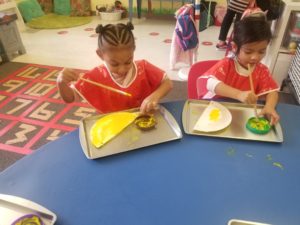 Vela-candle,
Vela-candle,
Bota-boot,
Bastón de caramel-candy cane,
Estrella-star,
Campana-bell,
Adorno (esfera, ornamento)-ornament,
Reno-reindeer,
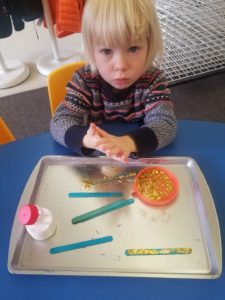 Árbol de Navidad-Christmas tree,
Árbol de Navidad-Christmas tree,
Papá Noel (Santa Claus) l- Santa Claus.
Words of the week:
Menorá, dreidel y vela.
Libro
Happy Chanukah Lights
By Annie Auerbach
Letra
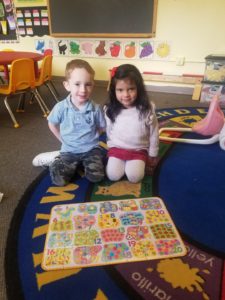 Nn
Nn
Número
6
Fígura
Rectangulo-rectangle
Color
Amarillo-yellow
Have an excellent weekend!!
by Jackie & Marci | Dec 7, 2019 | Kindergarten News
La Lectura
This week we read “La primera Navidad de Clifford” (Clifford’s first Christmas), because the book talks about the different activities that Emilia (The dog owner) did with Clifford in his first Christmas. All our children participated, also telling their own experiences in Christmas and all the activities they do when preparing for the holidays. The book talks about preparing and decorating the Christmas tree, wrapping gifts and at the end the joyful moment of opening their own gifts.
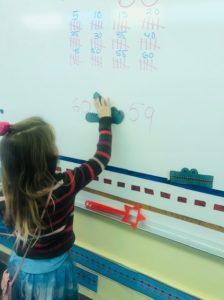
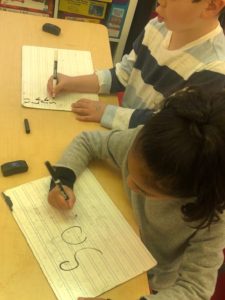
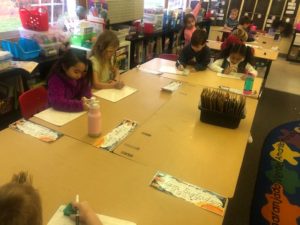 We worked with the children to develop their skills to talk and blend vowels A, E and I. For this activity we practiced doing dictation and reading words. We also practiced our letter strokes. We pay special attention for our children to recognize the sound of each letter and their form. With these activities the students will better understand how the letters work together. This is a systematic program that helps the children to connect language to written words. The main goal is that the children understand that words are composed of sounds and the letters that represent sounds.
We worked with the children to develop their skills to talk and blend vowels A, E and I. For this activity we practiced doing dictation and reading words. We also practiced our letter strokes. We pay special attention for our children to recognize the sound of each letter and their form. With these activities the students will better understand how the letters work together. This is a systematic program that helps the children to connect language to written words. The main goal is that the children understand that words are composed of sounds and the letters that represent sounds.
The words of the week were “Se” and “Su” the children worked making sentences using these words like “Mamá se comió la manzana.” (Mom ate the apple). Or “Yo veo su chaqueta roja.” (I see his red jacket.)
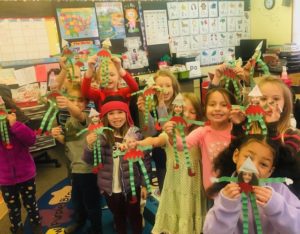
As in all weeks, we had fun making a craft. This week our children made a Paper Elf, incorporating their own photo to the paper cut elf.
Las matemáticas
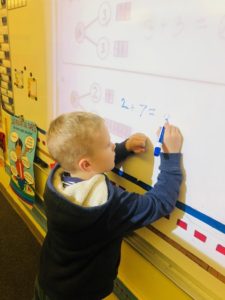 We continue working on the strokes of numbers. The numbers of the week were from 58 to 62. We revisited the more than/less than concepts, also identifying if a number is even or odd. We are also continuing with our number sense by identifying tens and units inside a given number. This week we started a new activity in math: The use of the abacus to make sums.
We continue working on the strokes of numbers. The numbers of the week were from 58 to 62. We revisited the more than/less than concepts, also identifying if a number is even or odd. We are also continuing with our number sense by identifying tens and units inside a given number. This week we started a new activity in math: The use of the abacus to make sums.
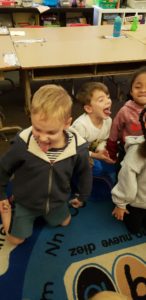
¨See my taste buds!¨
Science

¨Sour!¨
This week in The Five Senses science domain we finished up our sense of smell and began learning about the sense of taste. We learned about the four types of taste: sweet, sour, salty, and bitter. The class enjoyed tasting sour pickles and sweet honey.
Our weekly objectives were to:
• identify the five senses: sight, hearing, smell, taste, and touch
• identify each of the body parts associated with the five senses
• demonstrate understanding of the sense of smell and taste
• identify the parts of the mouth and their functions
• provide simple explanations about how we taste
History & Geography
We began our next unit called Columbus and the Pilgrims. The class learned about Spice Seekers in the 1400s. They learned when Constantinople closed the road to East Asia this led to commissioned expeditions by ship with the goal of finding a new route.
Our weekly objectives were to:
• identify the continents of Europe, Africa, and Asia
• understand why Europeans wanted to travel to Asia
• identify King Ferdinand and Queen Isabella of Spain
English Sight Words of the Week
said, eat, get, away
Wednesday Specials
Character Education
This week we were so grateful to have Dr. Torres join us for a special lesson. We brainstormed emotions and read a lovely book “Moody Cow Meditates”. We then made our own Mind Jars. We needed to imagine that this jar is our mind. When we are in a calm state, we can think clearly, and make good decisions. We imagined that the glitter is anger, worry, fear, etc – when those feelings hit, we may feel unbalanced or our thoughts may feel jumbled up. Our mind is cloudy and we can’t think as clearly. If we are still, slow down and take deep breaths our thoughts can settle and we can see more clearly and make better decisions.
Music with Ms. Nadia
Do your ears hang low? That was our signature song last month as we learned about pitch. Big instruments, like the booming double bass, play low. Small instruments, such as flutes (featured in Morning by Edvard Grieg) and violins (heard in Mozart’s Eine Kleine Nactmusik) sound high. The piccolo looks like a flue, but since it is smaller, it’s even higher! The piccolo is so high that in our Bear Cub Adventures this month, it was in the clouds! (Fun fact: Piccolo clouds rain pickles, which can be retrieved in a pirate ship and taken to a pirate princess to make her favorite pickle tea!) We also used a wonderful online resource which allowed us to listen to each instrument individually. Check it out at www.mydso.com/dso-kids/learn-and-listen/instruments .
Other highlights include dancing like animals and learning the alphabet backwards. I am so proud of these kids as they are learning how to sing together and get along with others!
by Marci & Ivary | Dec 7, 2019 | First Grade News
La Lectura
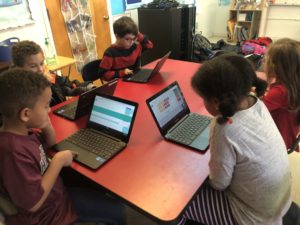 This week we read Alrededor del mundo. Our objectives were:
This week we read Alrededor del mundo. Our objectives were:
- learn the difference between gue/gui and güe/güi
- practice reading words with h
- use the comprehension skill compare and contrast while reading
- practice writing a list with numbers
Las matemáticas
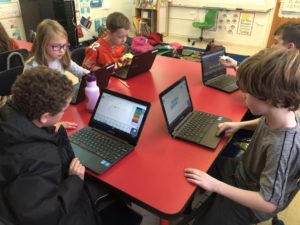 This week we learned about Ordinal and Positional Words. Our objectives were:
This week we learned about Ordinal and Positional Words. Our objectives were:
- practice saying what position you are in line using the sentence frame “Yo soy _____”
- practice saying who is primero (first), segundo (second), and ultimo (last)
- learn words to describe where something is
- practice positional words by playing Mtra.Ivary Says
Science
This week in our science domain: Animals and Habitats, we continued to learn about the Sonoran Desert. The class worked on putting together and reading a desert book.
Our weekly objectives were to:
• describe what a habitat is
• understand that living things live in habitats to which they are particularly suited
• identify the characteristics of desert plants and animals
• explain how desert animals have adapted to the desert habitat
• classify animals on the basis of the types of foods that they eat (herbivore, carnivore, omnivore)

Working on puzzle maps.
History & Geography
This week we began a new unit called Early Americas Civilization. We began by learning about the prehistoric nomadic peoples who came to the Americas from Asia.
Our weekly objectives were to:
• locate the continents of Asia and North America on a world map or globe
• understand that prehistoric Nomads follow the animals they hunted
• explain the importance of hunting among early peoples
• understand that the first people in North America arrived by crossing a ” land bridge ” between Asia and North America
English Sight Words of the Week
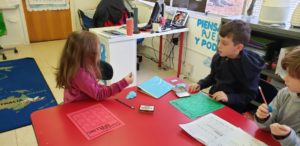
Partner sorting
that, there, than, they, these, this, tell, time
Wednesday Specials
Character Education
This week we were so grateful to have Dr. Torres join us for a special lesson. We brainstormed emotions and read a lovely book “Moody Cow Meditates”. We then made our own Mind Jars. We needed to imagine that this jar is our mind. When we are in a calm state, we can think clearly, and make good decisions. We imagined that the glitter is anger, worry, fear, etc – when those feelings hit, we may feel unbalanced or our thoughts may feel jumbled up. Our mind is cloudy and we can’t think as clearly. If we are still, slow down and take deep breaths our thoughts can settle and we can see more clearly and make better decisions.
Music with Ms. Nadia
During the month of November, we learned all about the Orchestra! This magical group of musicians led by a conductor is composed of four sections: strings, wood winds, brass, and percussion. Each section has their own distinct sound, which we learned through the interactive My First Orchestra Book and the amusing Orchestra Pit book. The strings sound like monkeys, the wood winds like birds, the brass like elephants, and the percussion like gorillas! We learned that the bigger the instrument, the lower the sound. This is why basses sound low and violins sound high. Each section has its own special place on the stage, which we experienced through putting together a giant orchestra puzzle! We also used a wonderful online resource which allowed us to listen to each instrument individually. Check it out at www.mydso.com/dso-kids/learn-and-listen/instruments !
In learning about the orchestra, we also learned about opera. When the orchestra plays for an opera, they play lower than the stage in a section called “the pit”. Back in the day before microphones, opera singers had to project their voices so loud to sing over the pit so that the audience members in the way back of the theatre could hear their voices! We specifically listened to excerpts from Humperdinck’s Hansel and Gretel, the timeless tale about eating a house. To interact with the story, we watched a funny scene and learned a dance! Because the original is in German, we learned an English translation of a song, Brother Come and Dance with Me.
by Jill & Sarah | Dec 7, 2019 | 2nd/3rd Grade News

La Lectura
This week we identified and wrote about characteristics of main characters. We also identified author’s purpose.
Students did a great job writing about their Thanksgiving holiday in their Spanish journal. We are working on having complete thoughts, noun-verb agreement, and providing details. After students wrote, they shared their writing with a partner who then needed to illustrate it. This helped the students to recognize if they had provided sufficient text for imagery.
Students have been working with their new spelling list. The spelling test will be next THURSDAY, December 12th.
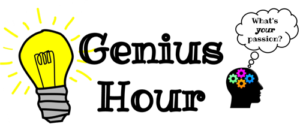 We did a quick brainstorming session of what makes a good presentation and what specifically should be included in their genius hour presentations, when they are ready. We had our first student share his genius hour project with the cl
We did a quick brainstorming session of what makes a good presentation and what specifically should be included in their genius hour presentations, when they are ready. We had our first student share his genius hour project with the cl
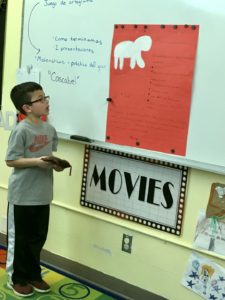
ass this week. This has been a great opportunity for the to share their own interests with their classmates while giving an oral presentation. Classmates were asked to provide critique: what were some things that were done really well and what was one thing that could be improved upon?
We learned all about the making of stuffed animals!
Las Matemáticas
We continued working with bar models to represent addition and subtraction problems. We are noticing that our biggest hurdle is copying the problems correctly! We talked about checking our numbers before completing the math.
We are also seeing how fluently knowing our math facts really affects our ability to solve math problems. We have been taking daily math facts quizzes for quite some time but are seeing some kiddos have stalled out. To help encourage progress in fact fluency we introduced www.mathfactspro.com as another way to help practice facts. (We are retiring Prodigy for now. Please have your kiddo practicing their addition and subtraction facts with either flashcards or this online program.)
We will soon be moving into multiplication where knowing addition and subtraction will be used as well. Please help encourage your kiddos to get all these subtraction and addition facts down before moving on to multiplication.
Science
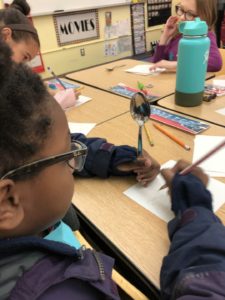
Learning about concave and convex. Photo by Frederick
This week we started a new science unit on light and sound. Our main objectives were to:
* Recall the senses and their corresponding sensory organs
* Recall the senses and their corresponding sensory organs
* Identify the sun as earths main source of light and name other light sources
* Identify light as a form of energy that travels in waves
* Explain why light is so important
* Describe how the light waves travel in different mediums
* Explain how shadows are formed
* Explain how late is absorbed, reflected, or transmitted
* Describe the three types of mirrors: plane, concave, and convex
* Compare and contrast the terms concave and convex
History & Geography
Our new unit is on the Vikings. Our objectives this week were to:
*Identify and locate Scandinavia, the Vikings’ homeland, on a world map
*Describe the Vikings’ way of life at home and at sea
*Describe the purpose of runes
*Understand the meaning of the following vocabulary: raid, fjord, blacksmith, jarl, plunder, ransom, and rune
*Recognize that in addition to being skilled sailors and traders, the Vikings were also fierce and terrifying Raiders
*Explain the original of the word berserk
*Understand the meaning of the following vocabulary: oarsman, berserker, tow, cargo, and goblet
Wednesday Specials
Character Education
This week we were so grateful to have Dr. Torres join us for a special lesson. We brainstormed emotions and read a lovely book “Moody Cow Meditates”. We then made our own Mind Jars. We needed to imagine that this jar is our mind. When we are in a calm state, we can think clearly, and make good decisions. We imagined that the glitter is anger, worry, fear, etc – when those feelings hit, we may feel unbalanced or our thoughts may feel jumbled up. Our mind is cloudy and we can’t think as clearly. If we are still, slow down and take deep breaths our thoughts can settle and we can see more clearly and make better decisions.
Music with Ms. Nadia
During the month of November, we learned all about the Orchestra! This magical group of musicians led by a conductor is composed of four sections: strings, wood winds, brass, and percussion. Each section has their own distinct sound and their own special place on the stage, which we had the opportunity to sketch. Each instrument has its own range (set of notes its able to play). We learned that the bigger instruments have lower ranges. For example, double basses sound low while violins sound high. We had fun learning through games, posters, and drawing activities. Bryce even brought his own violin to class one day, which we compared to my ukulele. (It’s about the same size!) We also used a wonderful online resource which allowed us to listen to each instrument individually. Check it out at www.mydso.com/dso-kids/learn-and-listen/instruments !
As we learned about the orchestra, we continued to learn the song Simple Gifts, which appears in the seventh movement of Aaron Copland’s Appalachian Spring. Through listening, we learned how to identify when each section is playing. It is a particularly great example of when each section of the orchestra is featured with its own shining moment. “Guess the orchestra section” is a fun game to play at home!
by Ivary & Paola | Dec 7, 2019 | 4th/5th Grade News
History & Geography
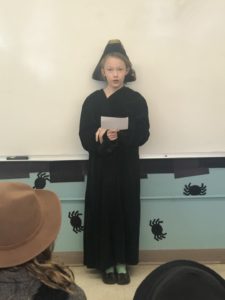
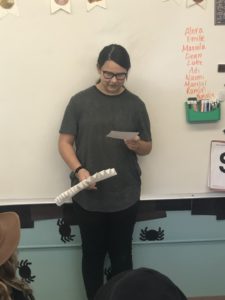
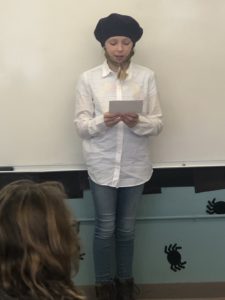
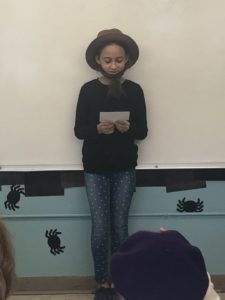
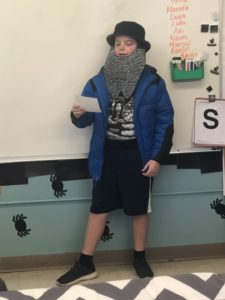
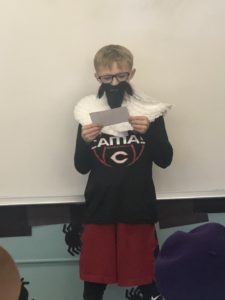
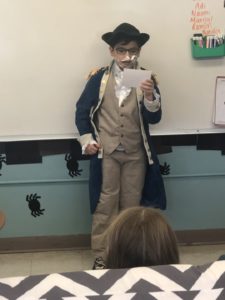
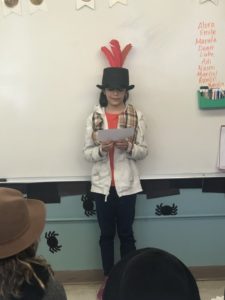
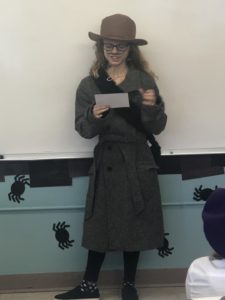
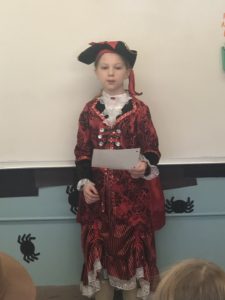
This week we began learning about the Renaissance. Our objectives were:
- complete our Age of Exploration unit by presenting our Explorer Reports
- compare and contrast the geography of 1300s Italy and present day Italy
- describe how and why the Renaissance began in Italy
- understand the differences between Medieval and Renaissance artists
Mathematics
This week we began learning about multiplying and dividing fractions. Our objectives were:
- finish out Algebra chapter by taking the chapter test
- understand how to multiply fractions “straight across”
- practice multiplying fractions within word problems
- understand how to multiply fractions with improper fractions
Lectura

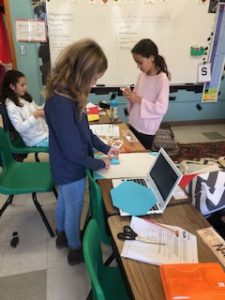
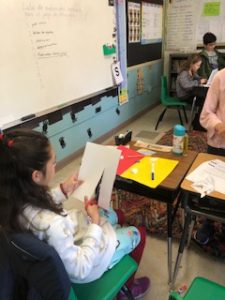
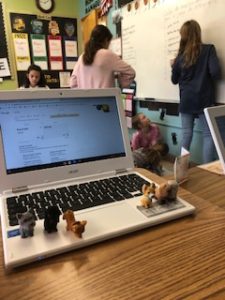
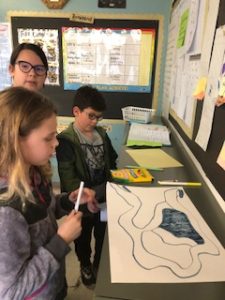
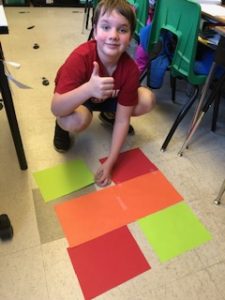
This week we started to wrap up our unit Nuestro rincón del universo. We finished reading the biography of Ellen Ochoa – she is such an inspirational scientist who opened the path for so many women in science. We also spent time reviewing the main objectives for this unit in ortografia and gramatica. Students took home their review packet. Please make sure they practice so they are ready for our end of the unit assessments next week. Students created spelling games to help them practice for our test too. They are amazing, as always! We will be having our reading and grammar test on Tuesday the 10th, and our spelling test on Thursday the 12th. Please let me know if you have any questions.
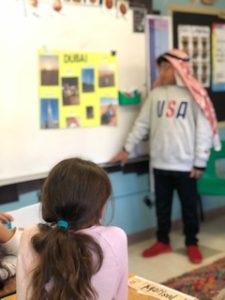
Ben did such a great job sharing with the class his amazing trip! What a wonderful experience!
Ciencias
What is the weather and how can it be described? How do meteorologists measure and record weather variables?
Students reviewed local weather reports and determined the variables that combine to produce the weather. They were introduced to weather instruments—a thermometer, compass,and wind vane. our class is using a digital weather station with a receiver outdoors to gather weather data, and develop a plan for acquiring daily data and sharing them with the class. We will continue to work on this next week.
Wednesday Specials
Character Education
This week we were so grateful to have Dr. Torres join us for a special lesson. We brainstormed emotions and read a lovely book “Moody Cow Meditates”. We then made our own Mind Jars. We needed to imagine that this jar is our mind. When we are in a calm state, we can think clearly, and make good decisions. We imagined that the glitter is anger, worry, fear, etc – when those feelings hit, we may feel unbalanced or our thoughts may feel jumbled up. Our mind is cloudy and we can’t think as clearly. If we are still, slow down and take deep breaths our thoughts can settle and we can see more clearly and make better decisions.
Music with Ms. Nadia
During the month of November, we learned all about the Orchestra! This magical group of musicians led by a conductor is composed of four sections: strings, wood winds, brass, and percussion. Each section has a distinct sound and special place on the stage. Within these sections, each instrument has its own range (set of notes its able to play). We learned that the bigger instruments (like tubas) have lower ranges, while tiny instruments (especially the piccolo!) have higher ranges. We had fun learning through games, posters, and whiteboard drawing activities. We also used a wonderful online resource which allowed us to listen to each instrument individually. Check it out at www.mydso.com/dso-kids/learn-and-listen/instruments !
Last month we also begun learning the recorder as a group, forming a “recorder choir”. Starting simple with notes G, A, and B, students are already able to sight-read music, follow rhythms, and play in harmony! Our student songs of the month led us to participate in You’re the Fire Zumba, Lemon Boy Stretches, and a Let Me Down Slowly rhythm stick game.



 Libro
Libro




 This week we read the book “El invierno” (The Winter) where it talks about how much fun winter can be and all activities that can be done. It is a book that motivated children a lot to talk about what they do in winter, from the clothes they wear, how they play with the snow, to the Christmas parties and gifts they are so excited to expect.
This week we read the book “El invierno” (The Winter) where it talks about how much fun winter can be and all activities that can be done. It is a book that motivated children a lot to talk about what they do in winter, from the clothes they wear, how they play with the snow, to the Christmas parties and gifts they are so excited to expect. The words of the week were “Menos” (less) and “Día” (day. The children did a great job making sentences using these words like :” 5 es menos que ocho “(5 is less than 8) or “Este es un dia de escuela”(This is a school day).
The words of the week were “Menos” (less) and “Día” (day. The children did a great job making sentences using these words like :” 5 es menos que ocho “(5 is less than 8) or “Este es un dia de escuela”(This is a school day).
 This week we worked on the strokes that form the numbers and the quantities that are associated with each number. The numbers of the week were 63 to 66. We also practiced units (ones) and tens as well as less than and more than concepts. We used number bonds to practice our sums, and we continued practicing with the abacus.
This week we worked on the strokes that form the numbers and the quantities that are associated with each number. The numbers of the week were 63 to 66. We also practiced units (ones) and tens as well as less than and more than concepts. We used number bonds to practice our sums, and we continued practicing with the abacus.







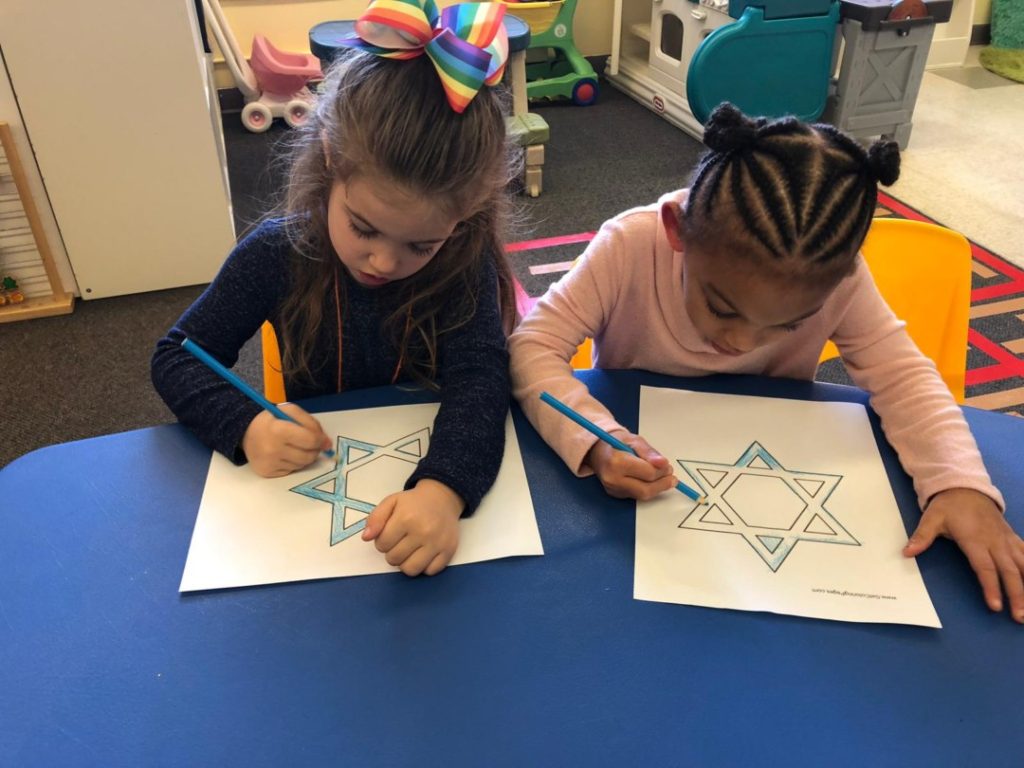
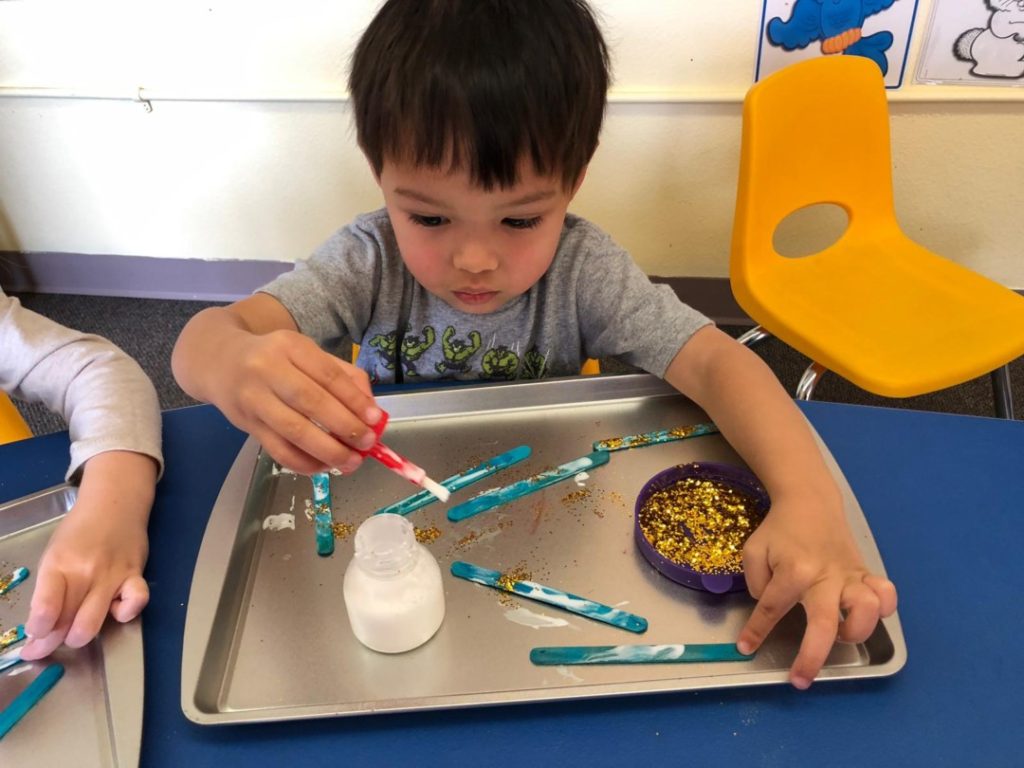
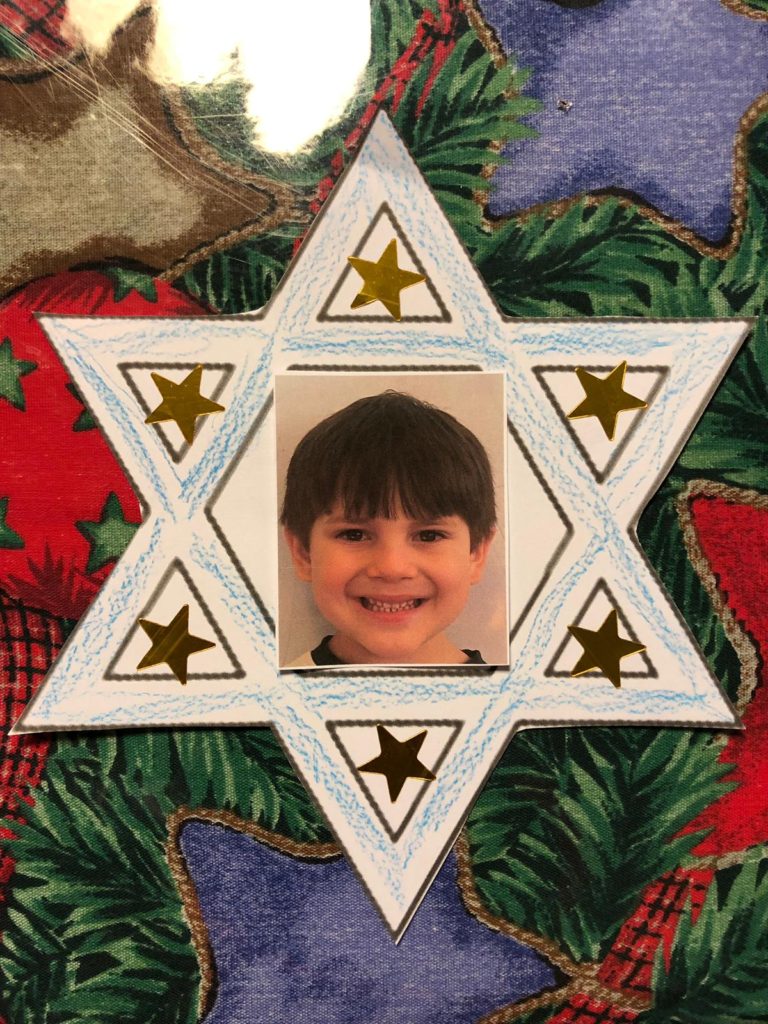
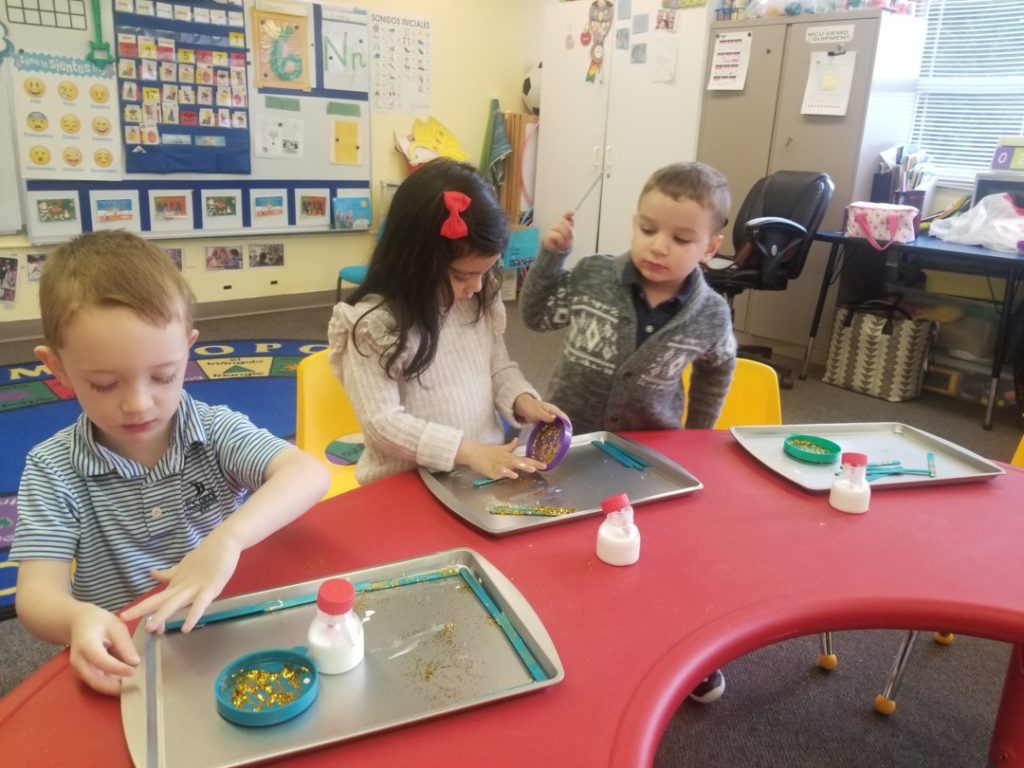
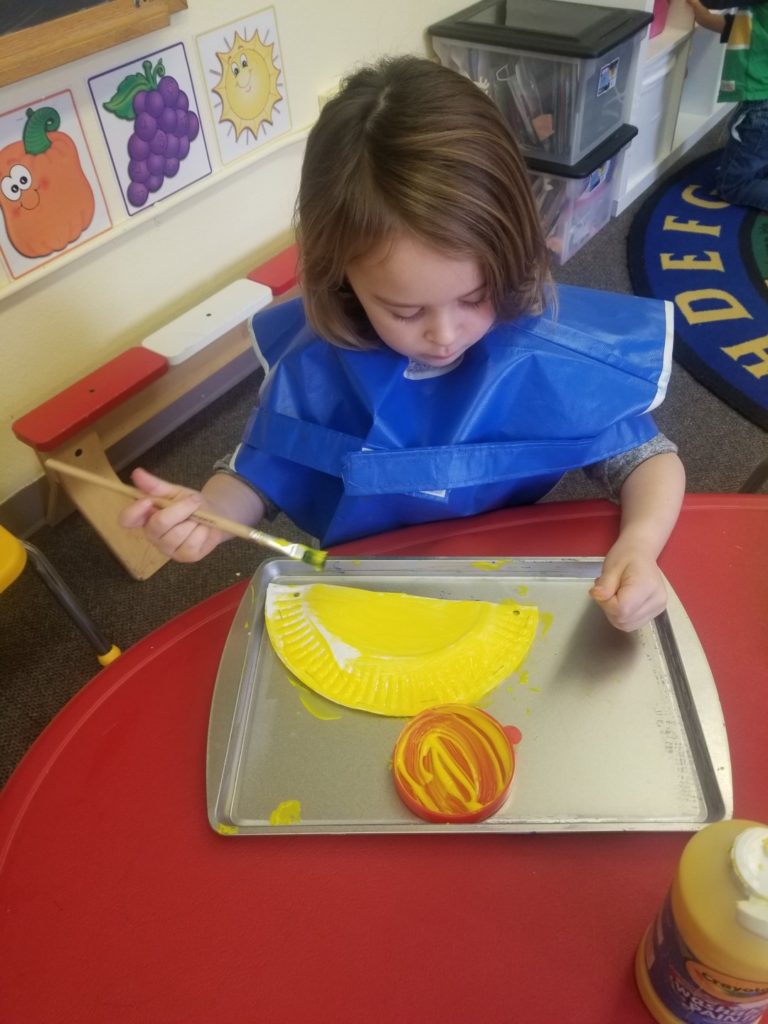
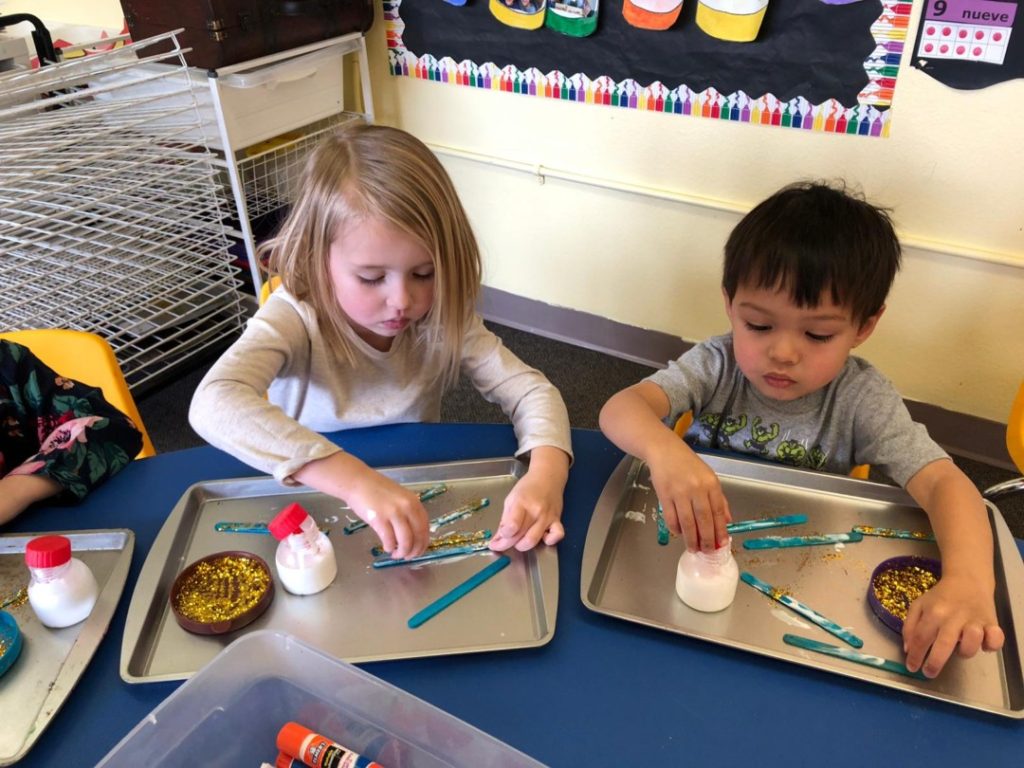
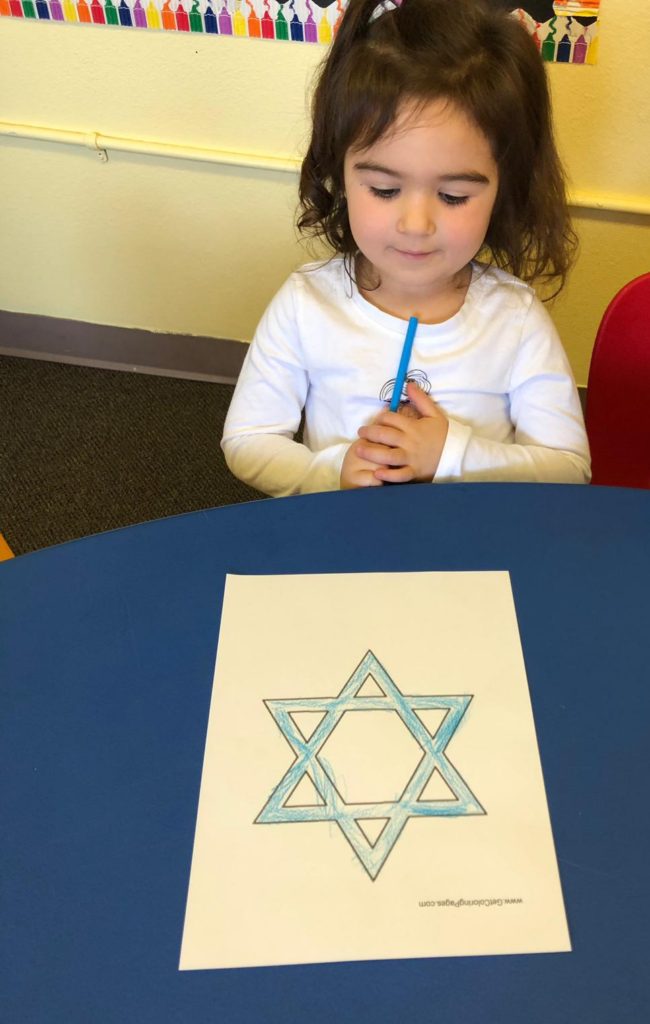
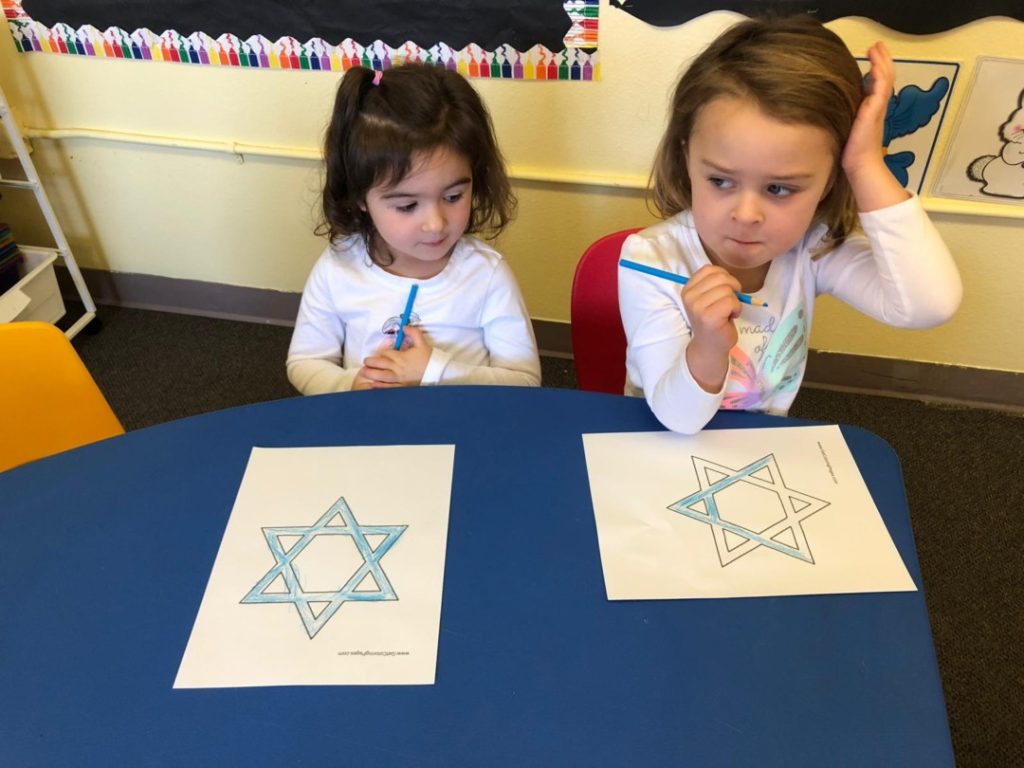
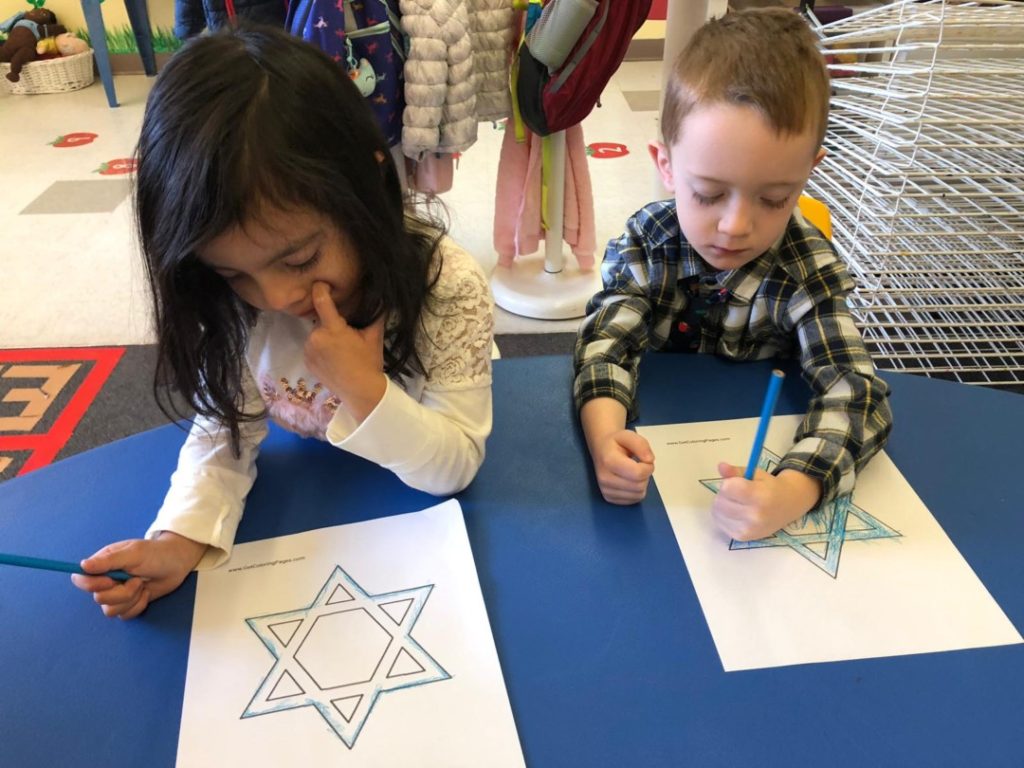
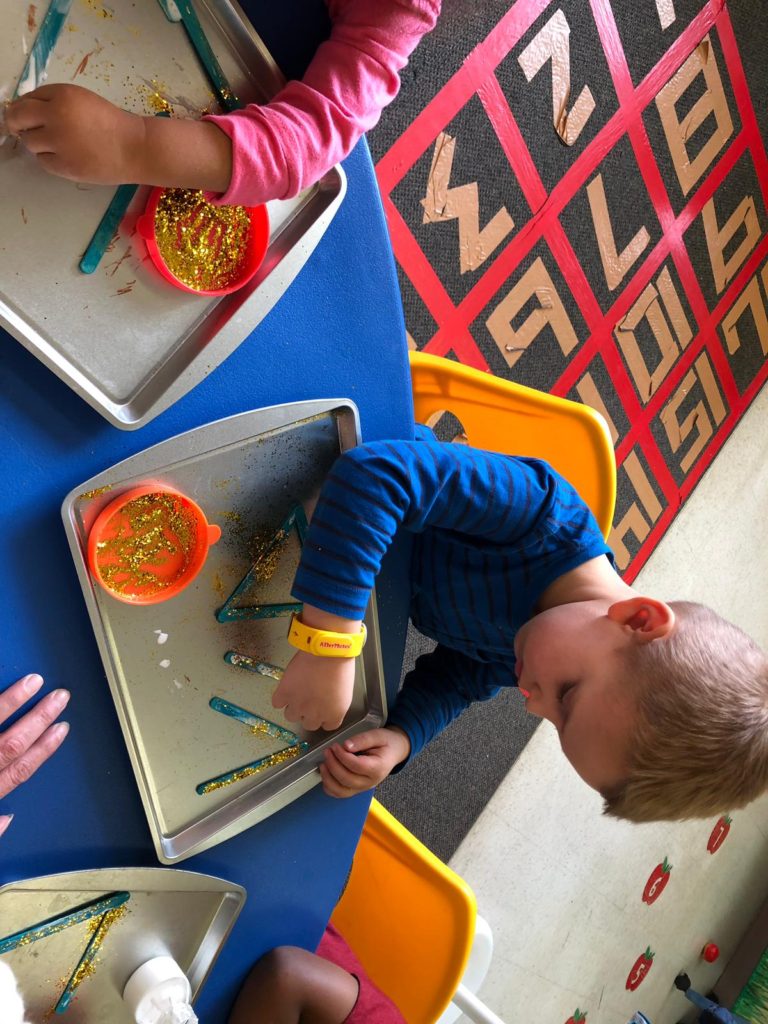
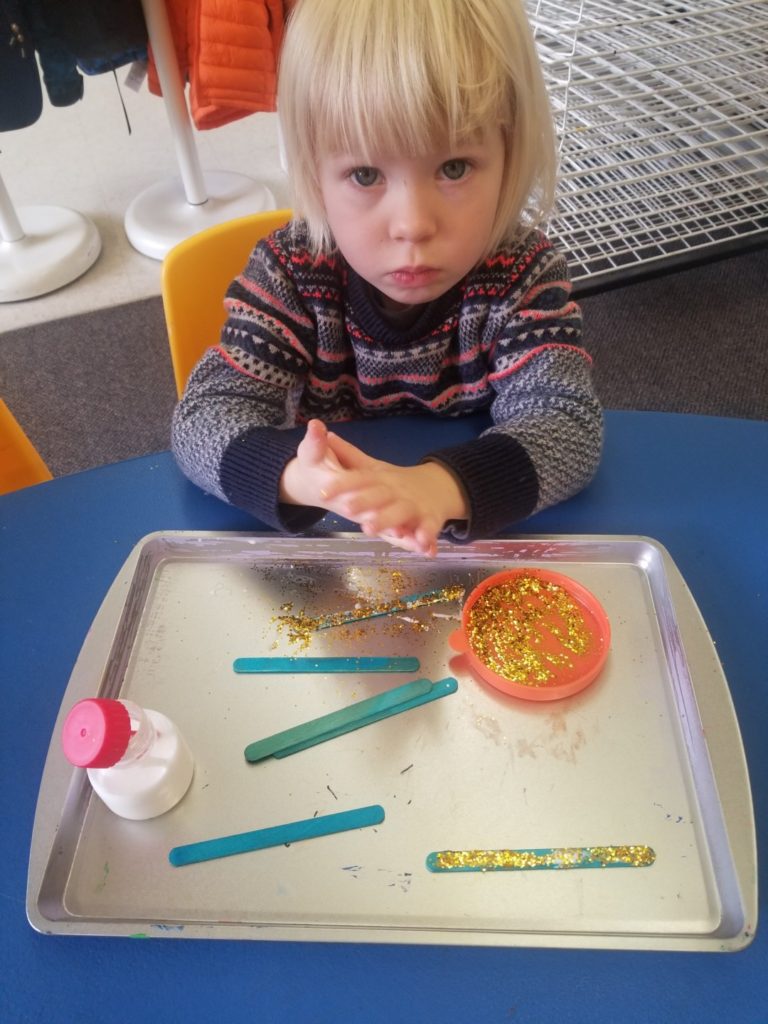
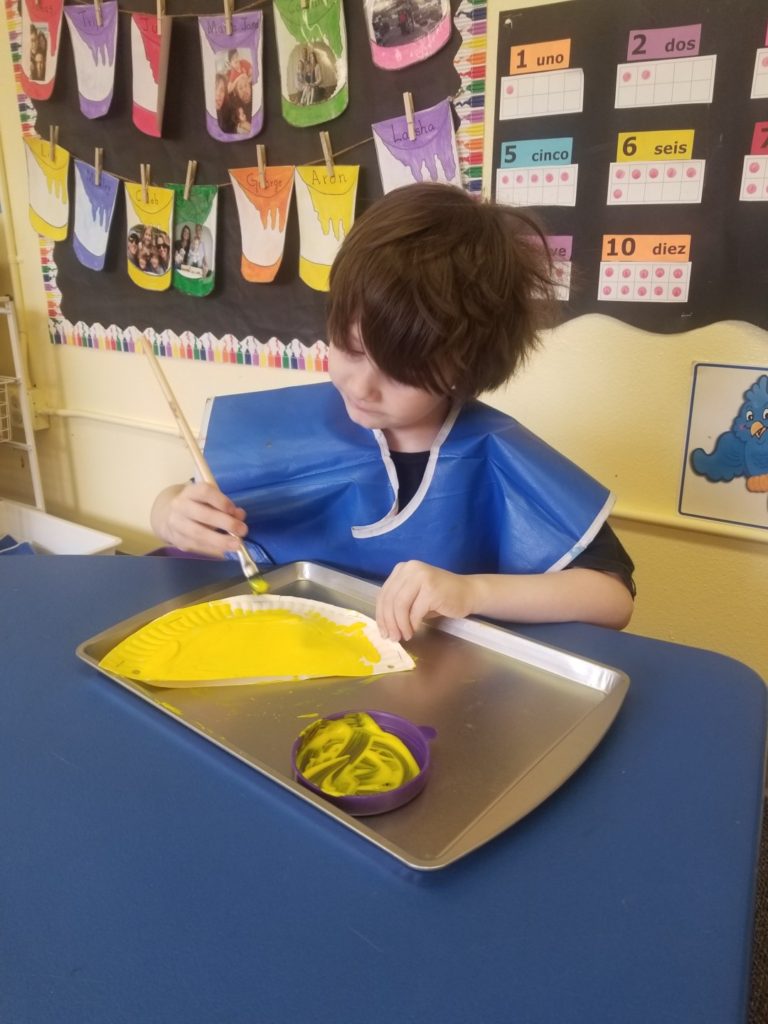
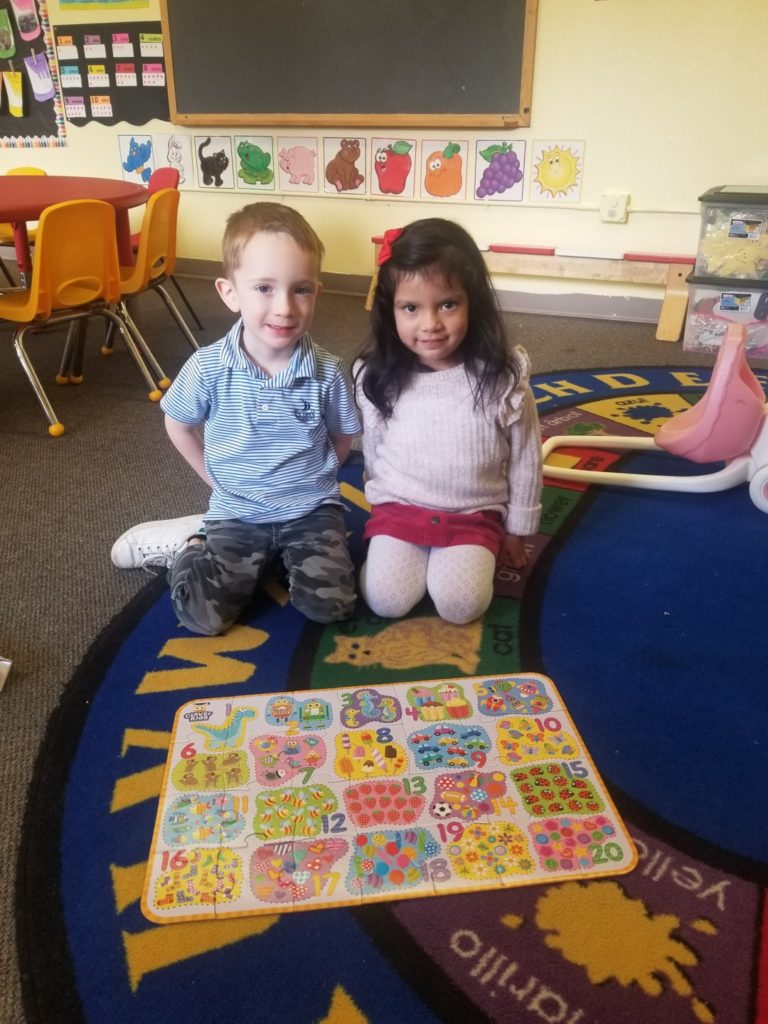
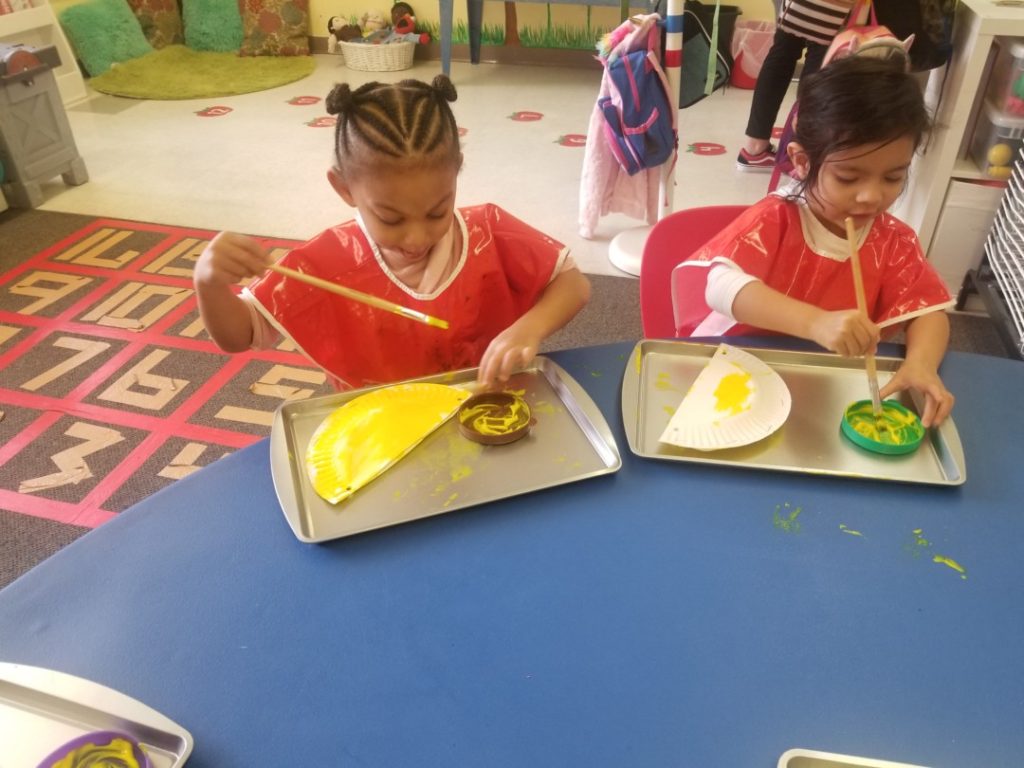
 Vela-candle,
Vela-candle, Árbol de Navidad-Christmas tree,
Árbol de Navidad-Christmas tree, Nn
Nn

 We worked with the children to develop their skills to talk and blend vowels A, E and I. For this activity we practiced doing dictation and reading words. We also practiced our letter strokes. We pay special attention for our children to recognize the sound of each letter and their form. With these activities the students will better understand how the letters work together. This is a systematic program that helps the children to connect language to written words. The main goal is that the children understand that words are composed of sounds and the letters that represent sounds.
We worked with the children to develop their skills to talk and blend vowels A, E and I. For this activity we practiced doing dictation and reading words. We also practiced our letter strokes. We pay special attention for our children to recognize the sound of each letter and their form. With these activities the students will better understand how the letters work together. This is a systematic program that helps the children to connect language to written words. The main goal is that the children understand that words are composed of sounds and the letters that represent sounds.
 We continue working on the strokes of numbers. The numbers of the week were from 58 to 62. We revisited the more than/less than concepts, also identifying if a number is even or odd. We are also continuing with our number sense by identifying tens and units inside a given number. This week we started a new activity in math: The use of the abacus to make sums.
We continue working on the strokes of numbers. The numbers of the week were from 58 to 62. We revisited the more than/less than concepts, also identifying if a number is even or odd. We are also continuing with our number sense by identifying tens and units inside a given number. This week we started a new activity in math: The use of the abacus to make sums.






 We did a quick brainstorming session of what makes a good presentation and what specifically should be included in their genius hour presentations, when they are ready. We had our first student share his genius hour project with the cl
We did a quick brainstorming session of what makes a good presentation and what specifically should be included in their genius hour presentations, when they are ready. We had our first student share his genius hour project with the cl

















